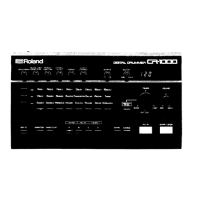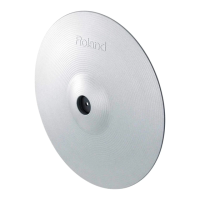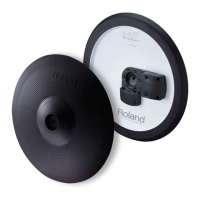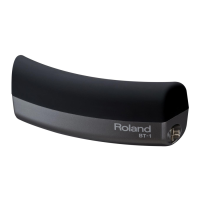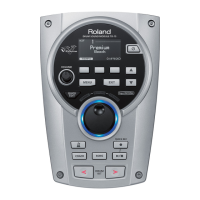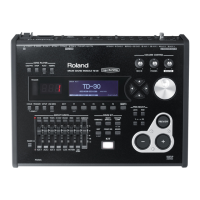•
Pitch
Bender
Messages
These
messages
transmit bender lever (pitch) control
data.
*
The
CR-80 does
not receive or transmit this type of
message.
•
Aftertouch
Messages
These
messages transmit keyboard
aftertouch
data (the function
that causes
changes in
the
volume,
tone,
vibrato
etc.
of
a
note after it has been
played).
*
The
CR-80 does
not receive or transmit this t/pe of
message.
«
Program Change
Message
Generally,
these messages
are
used to change patches. Using
program numbers
(1
•
128),
you can change sound patches.
*
The
CR-80 uses
Program Change messages (together
with Control
Change messages) to
-
change Drum Sets or Rhythm
Patterns.
(See
page
54).
•
Control Change
Messages
These messages control performance enhancement;
sustain.moduiation, pitch bend
etc.
Each
function is specified by a
Control number. The
functions that
can be
controlled
vary
depending on the specific MIDI device.
*
The CR'80
uses
Control Change messages to adjust the
volume
and to change
Drum Sets.
Rhythm
Styles or Rhythm
Patterns
together with Program
Change messages
(See page 54).
Q System Messages
(messages transmitted regardless of the MIDI
channel)
System messages include Exclusive messages, Sync
messages, system monitoring
mes-
sages,
etc.
Common
Realtime
Active Sensing
All Note
Off
These include
Song Select
and
Song
Position
Pointer messages.
*
7he
CR'80 can
transmit and receive Song Select
messages.
These include
data
for synchronized performance: Clock
(for tempo setting),
Start/Stop
and
Continue
Start (resume
playback).
*
The
CR-80 can
transmit Start/Stop and Clock,
and receive Start/Stop.
Clock and
Continue
Start.
These
messages
monitor the integrity of MID! connections.
They insure that cables are
secure and functioning
properly.
*
The
CR-80 can transmit
and receive Active Sensing
messages.
This
message turns
off all voices. In the event of
a
MIDI malfunction,
some note may
"hang
on" or
be
"stuck",
This
message
will
turn off all
such
voices.
*
The
CR-80 can receive
All Note Off messages.
34

